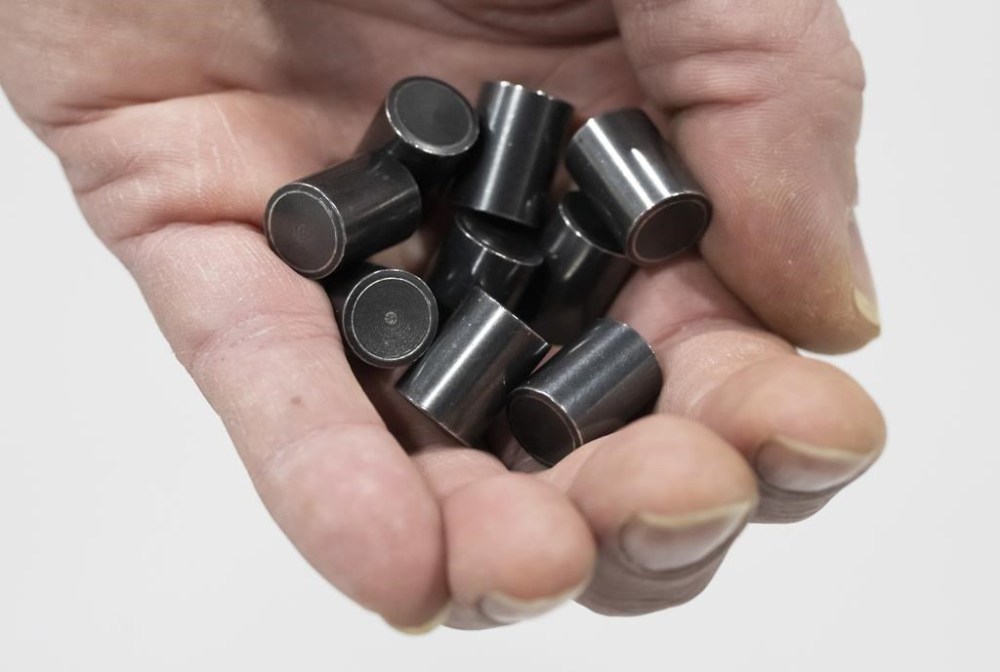Ontario town votes to become a willing host for a nuclear waste repository
Advertisement
Read this article for free:
or
Already have an account? Log in here »
To continue reading, please subscribe:
Monthly Digital Subscription
$0 for the first 4 weeks*
- Enjoy unlimited reading on winnipegfreepress.com
- Read the E-Edition, our digital replica newspaper
- Access News Break, our award-winning app
- Play interactive puzzles
*No charge for 4 weeks then price increases to the regular rate of $19.00 plus GST every four weeks. Offer available to new and qualified returning subscribers only. Cancel any time.
Monthly Digital Subscription
$4.75/week*
- Enjoy unlimited reading on winnipegfreepress.com
- Read the E-Edition, our digital replica newspaper
- Access News Break, our award-winning app
- Play interactive puzzles
*Billed as $19 plus GST every four weeks. Cancel any time.
To continue reading, please subscribe:
Add Free Press access to your Brandon Sun subscription for only an additional
$1 for the first 4 weeks*
*Your next subscription payment will increase by $1.00 and you will be charged $16.99 plus GST for four weeks. After four weeks, your payment will increase to $23.99 plus GST every four weeks.
Read unlimited articles for free today:
or
Already have an account? Log in here »
Hey there, time traveller!
This article was published 10/07/2024 (500 days ago), so information in it may no longer be current.
IGNACE, ONTARIO – A northwestern Ontario town has formally decided it is willing to become the site of a deep geological repository for Canada’s nuclear waste.
The Nuclear Waste Management Organization plans to select a site this year where millions of bundles of used nuclear fuel will be placed in a network of underground rooms connected by cavernous tunnels.
The process for the $26-billion project had already been narrowed down to two sites, Ignace in northern Ontario and another in southern Ontario, and the organization has said both the local municipality and the First Nation in those areas will have to agree to be willing hosts.

Ignace, between Thunder Bay and Kenora, on Wednesday became the first of those four communities to make its decision known, as town council voted in favour of it at a special meeting.
Coun. Wayne Minnear said he was pleased that the town will move forward to possibly host the repository.
“I’m also surprised because everybody, or some people that I spoke to, were deadly against it … but the community has pulled together with the foresight to see that this is the plan of the future,” he said.
The group We the Nuclear Free North criticized the process, which involved a consultant report and council vote, rather than the referendum the other municipality in the running is set to hold in October. As well, the group noted that the proposed site is outside the community, so Ignace council shouldn’t have the final say.
“At minimum this should be a regional decision, not the decision of one small upstream council,” Wendy O’Connor, a volunteer with the group, wrote in a statement.
Mayor Kim Baigrie called it “the decision of a lifetime” with a process that began more than 14 years ago.
“We put our hand up to state we were interested in hearing and learning more about this opportunity for our community – and boy, did we learn more.”
A committee of community members tasked with taking the pulse of the town’s willingness presented the results of a community vote before council made its decision. Out of the 640 residents who voted, 495 or 77 per cent voted in favour.
Wabigoon Lake Ojibway Nation is expected to make its decision in October, and neither the municipality of South Bruce nor the Saugeen Ojibway Nation has yet made a decision.
The current fleet of nuclear reactors in Canada will produce about 5.5 million used fuel bundles, with around 3.2 million already in either wet or dry storage on-site at nuclear plants.
But the Nuclear Waste Management Organization says the current containers of thick concrete walls lined on the outside with a steel plate are designed to last 50 years, so they are not a long-term solution.
The organization, funded by the corporations that generate nuclear power and waste, such as Ontario Power Generation and Hydro-Québec, is instead planning to build a deep geological repository, as far underground as the CN Tower is tall.
The used nuclear fuel pellets, baked into ceramic, are contained in fuel rods made of corrosion-resistant Zircaloy. Those rods will be in containers made of carbon steel and coated with copper, and those containers will be packed into bentonite clay.
Opponents in the affected communities worry about safety, while proponents see value in the jobs and economic development the project will bring.
This report by The Canadian Press was first published July 10, 2024.

